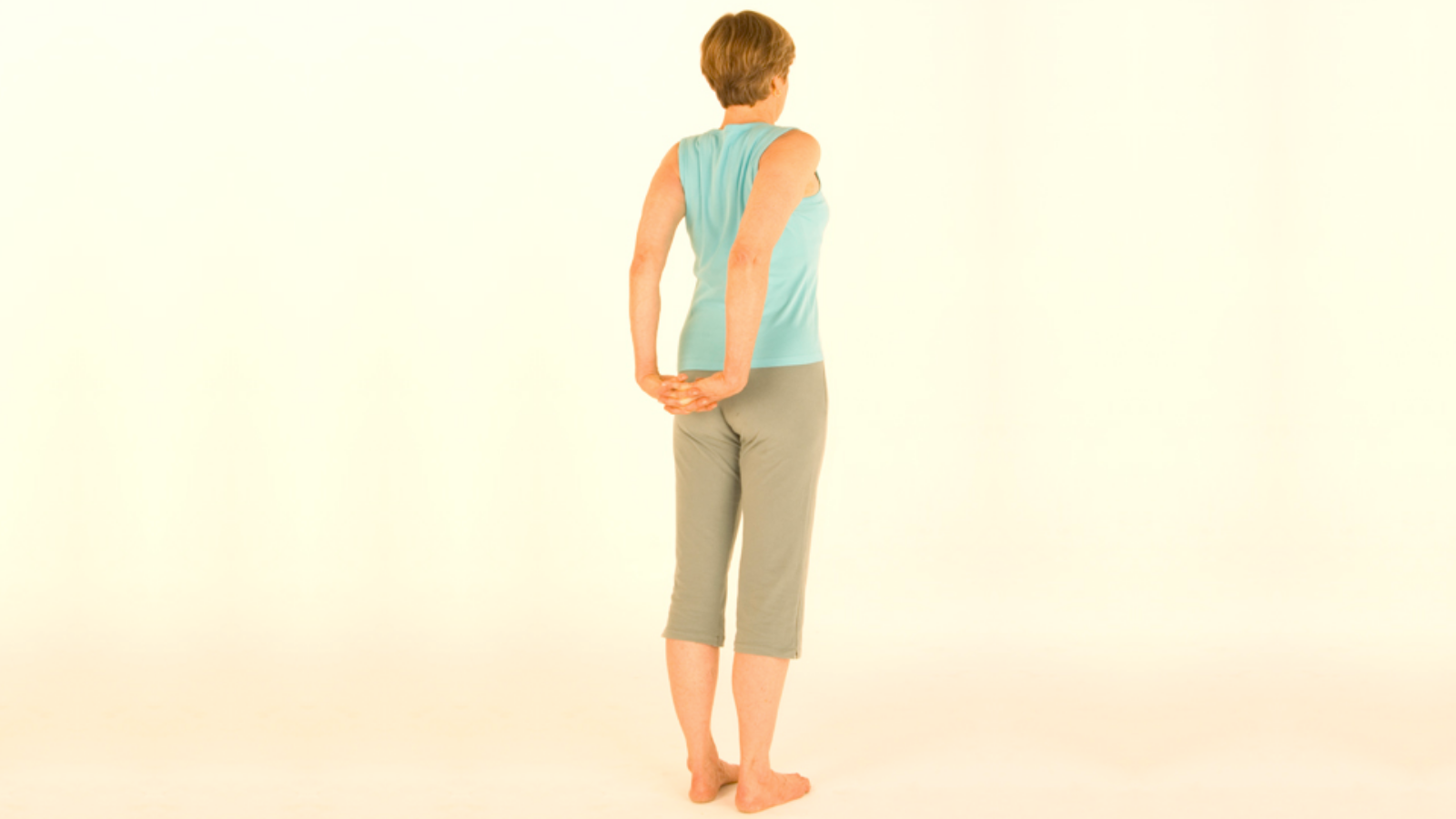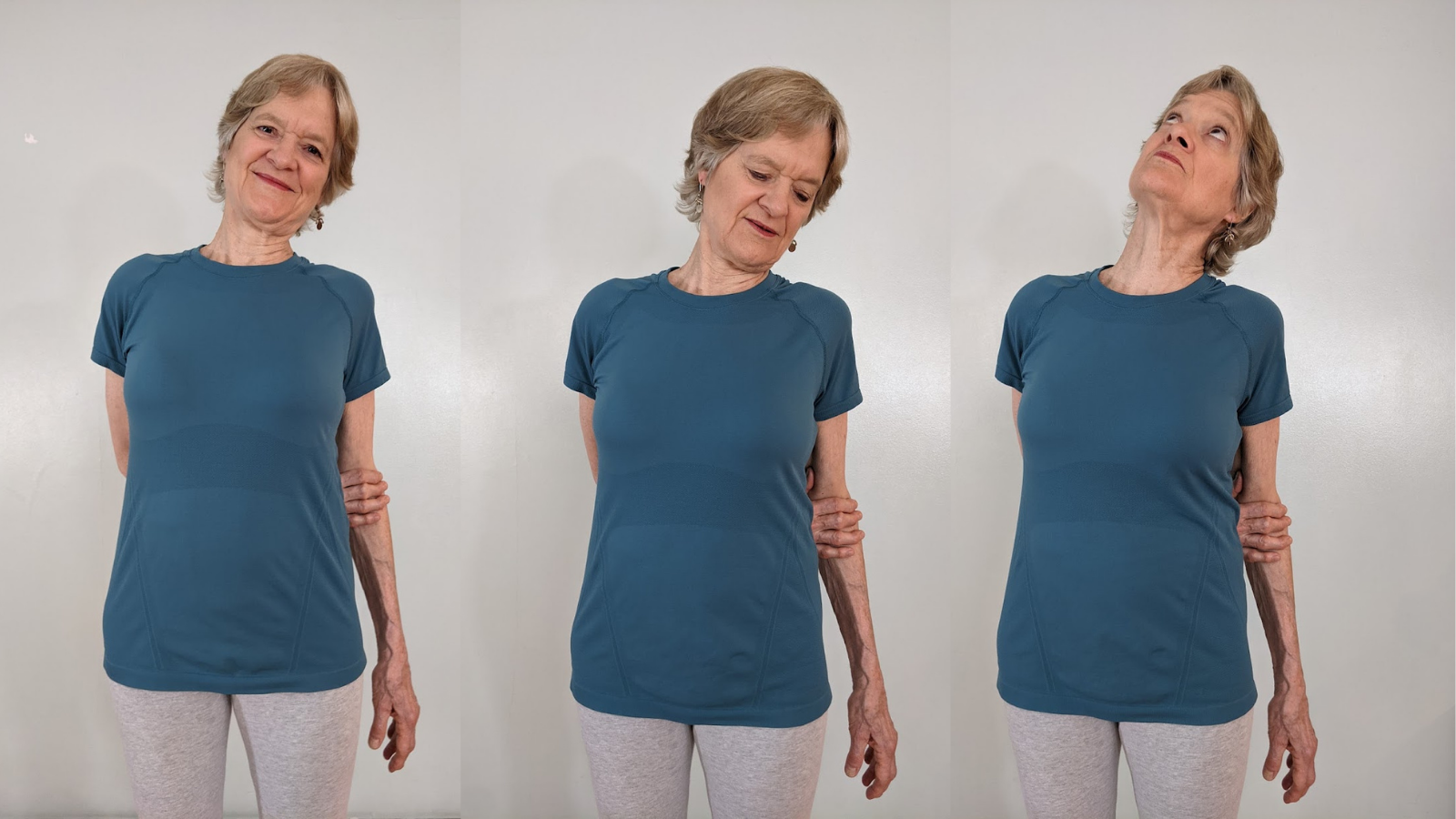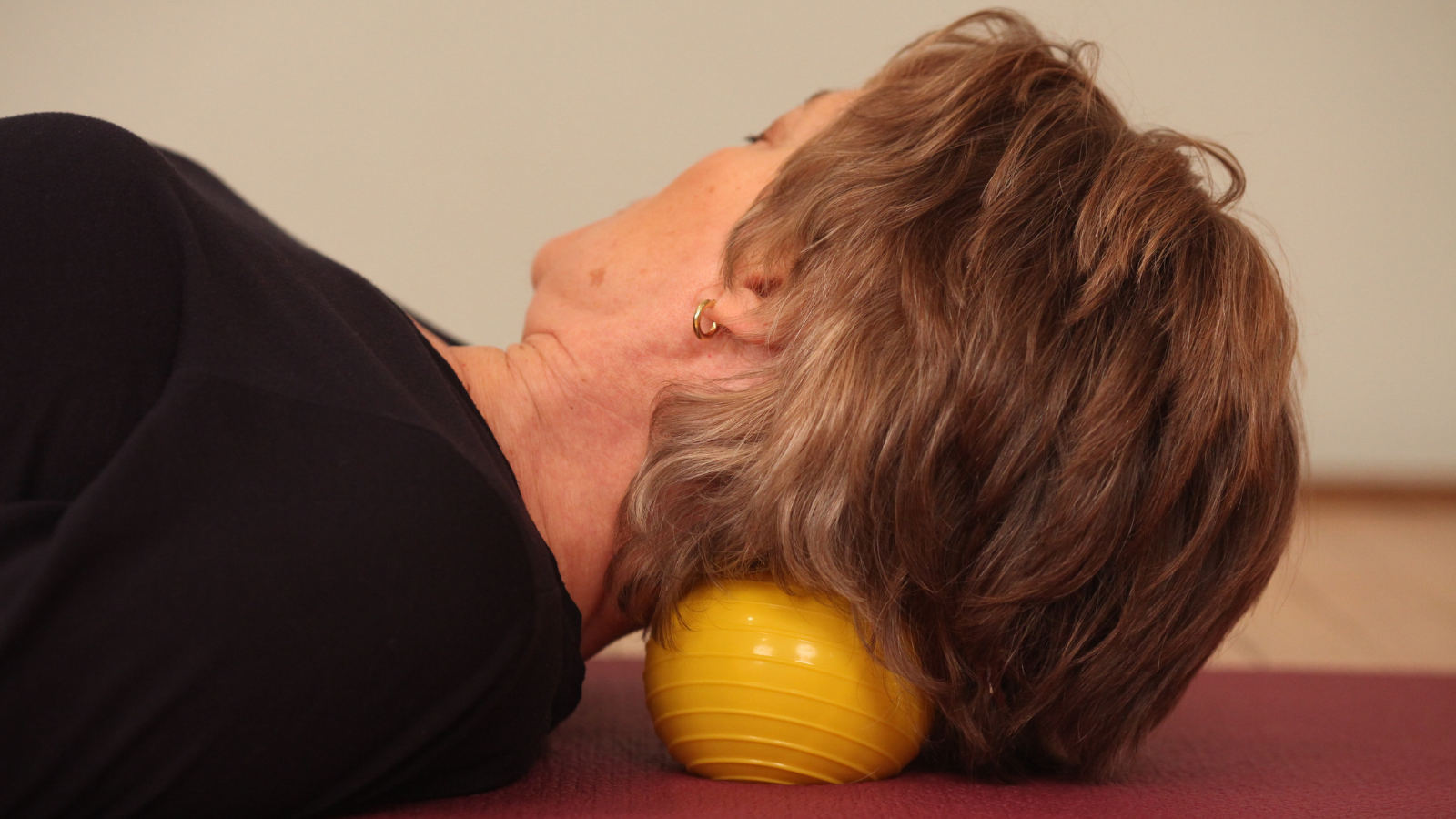Relieve Tension with a 15-Minute Neck and Shoulder Release

Do nagging pains in the shoulders and neck impact your everyday life, perhaps even causing mental stress or headaches? Relief is possible, in as little as 10 to 15 minutes a day. Try this easy neck and shoulder release sequence.
The good news: our shoulders and neck have a complex array of muscles and joints to give us an amazing range of motion. The bad news: those muscles and joints can be locked into inefficient and even harmful patterns. More good news: you can re-establish beneficial patterns so that your body knows how to return to “neutral” after any activity or stress that builds up tension.
How to Practice a Quick Neck and Shoulder Release
1. Shoulder Circles (2 minutes)
- Standing or sitting, move your shoulders forward, up, back, and down. Do this slowly and with close attention to what you feel. Don’t just rush through it—“I already know this one, it’s easy.” Really feel the process and note the tight areas, crackling noises, areas of ease.
- Do it 5 times in each direction. Then stop and do a few deep breaths.
2. Massage the Trapezius Muscles with Rubber Balls (5 to 10 minutes)

You’ll need two matching balls, ideally with a firm texture. Tennis balls are about the right size, but their fabric skin is not ideal because they will slip around. A grippy rubber surface is best. See the links below for the online resource, or check your local sporting goods and toy stores.
- Lie on your back with a yoga block nearby. Place the balls under your upper trapezius muscles, one on each side. Readjust the exact position until it feels right: find the tight spots without causing extreme discomfort.
- Place the block under your hips, so you’re in a supported Bridge Pose (Setu Bandhasana). Bring your hands to rest on your forehead and point your elbows upward.
- There are two choices of movement. In both options, the movement adds to the effect of the balls as they encourage release of tension.
- Remain still with your torso and move your arms slowly in the air. You can straighten your elbows, or keep them bent as you move. Explore different directions and notice how the pressure from the balls changes. Move very slowly. Frequently go back to a “home base” position in which your arms are as relaxed as possible.
- With your arms resting on the floor encircling your head, move your torso very slowly from side to side.
4. Do this for 5-10 minutes or so.
3. Shoulder Stretch and Strengthener (3 minutes)

Because most of our activities involve the arms moving forward, we need to balance that with strong support from the upper back muscles, for the spine, the shoulders and the neck.
- Clasp your hands behind your back.
- On an inhalation, lift your shoulders just an inch or two up toward your ears, then pull them back, squeezing your shoulder blades together on your back.
- Keep the upper trapezius (where you had the balls) as wide and soft as possible. Do the squeeze with the muscles further down your back (upper and lower trapezius and rhomboids).
- Hold this for 3 to 5 breaths, then release. Repeat once more.
4. Side Neck Stretch (3 minutes)

- Standing tall, broaden your front chest. Take your arm behind your back and bend your elbow 90 degrees. Your forearm should be resting across your waist so that your palm is facing away from your back. Clasp your left arm with your right hand. If this arm position is not possible, you can sit on the floor and reach your right hand to the side, touching the floor or a block.
- Tilt your head toward your left shoulder, looking forward. Stay there for several breaths. Then still tilting your head, look down and hold that for several breaths. Then turn to look up, and hold for several breaths. Then return to center, release, and repeat on the other side.
5. Massaging the Back of Your Neck (5 to 10 minutes)

Use one inflatable ball that’s about 5 to 6 inches in diameter, the size of a common playground ball.
- Place the ball under the top of your neck, just below the base of your skull. Pause there to feel the sensations created by the pressure of the ball.
- Then very slowly turn your head to one side, progressing across toward your ear. Then return to the center, and go to the other side slowly.
- Repeat again if you wish. Then remove the ball and gently roll your head to each side to feel the result.
Practice this neck and shoulder release series daily and enjoy more freedom and ease!
Also, read...
Teaching Svadhyaya: 3 Ways to Encourage Self-Study in Yoga
Dec 15 – Meagan McCrary
In Celebration of Gray-Haired Yoga – Busting the Myth of the Yoga Body
Dec 12 – Charlotte Bell
Related courses

 Ellen Saltonstall (E-RYT 500, C-IAYT)is a yoga instructor and body therapist based in New York with extensive training in the Iyengar and Anusara methods. She has been a practitioner of yoga and meditation for over 40 years. She teaches Bodymind Ballwork, a method of self-massage using rubber balls which she developed. She co-authored Yoga for Arthritis, 2008, and Yoga for Osteoporosis, 2010 with Dr. Loren Fishman. She has published two other books: Anatomy & Yoga: A Guide for Teachers and Students (Abhyasa Press, 2016), and The Bodymind Ballwork Method: A Self-Directed Practice to Help You Move with Ease, Release Tension, and Relieve Chronic Pain (North Atlantic Books, 2018). She offers yoga therapy webinars through YogaUOnline.com, and she teaches nationally and internationally with a specialty in anatomy and therapeutics. She is known for her clarity and depth of knowledge, and her enthusiasm in encouraging students of all levels to find freedom and joy through yoga. Please visit her website at www.ellensaltonstall.com.
Ellen Saltonstall (E-RYT 500, C-IAYT)is a yoga instructor and body therapist based in New York with extensive training in the Iyengar and Anusara methods. She has been a practitioner of yoga and meditation for over 40 years. She teaches Bodymind Ballwork, a method of self-massage using rubber balls which she developed. She co-authored Yoga for Arthritis, 2008, and Yoga for Osteoporosis, 2010 with Dr. Loren Fishman. She has published two other books: Anatomy & Yoga: A Guide for Teachers and Students (Abhyasa Press, 2016), and The Bodymind Ballwork Method: A Self-Directed Practice to Help You Move with Ease, Release Tension, and Relieve Chronic Pain (North Atlantic Books, 2018). She offers yoga therapy webinars through YogaUOnline.com, and she teaches nationally and internationally with a specialty in anatomy and therapeutics. She is known for her clarity and depth of knowledge, and her enthusiasm in encouraging students of all levels to find freedom and joy through yoga. Please visit her website at www.ellensaltonstall.com.
Resources
Recent articles
Teaching Svadhyaya: 3 Ways to Encourage Self-Study in Yoga
Dec 15 – Meagan McCrary
In Celebration of Gray-Haired Yoga – Busting the Myth of the Yoga Body
Dec 12 – Charlotte Bell
Categories
Upcoming courses
Recent articles
Almost there...
Sorry, we couldn't find anything...
Yoga Practice Tips
Teaching Svadhyaya: 3 Ways to Encourage Self-Study in Yoga
As yoga teachers, our job is to teach yoga. This means more than…
Dec 15 – Meagan McCrary
Yoga Practice Tips
In Celebration of Gray-Haired Yoga – Busting the Myth of the Yoga Body
I found my first grey hair when I was 22. It wasn’t completely shocking.…
Dec 12 – Charlotte Bell
Yoga Practice Tips
Judith Hanson Lasater on The Art of Teaching Yoga: Making Every Movement an Asana
Judith Hanson Lasater is one of the longest-teaching yoga teachers in the U.S. In…
Dec 09 – By:



